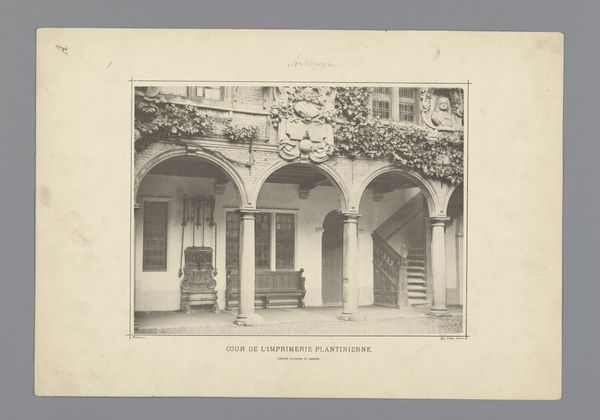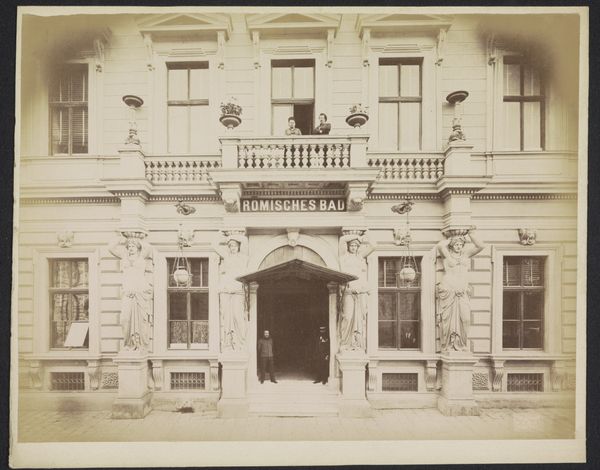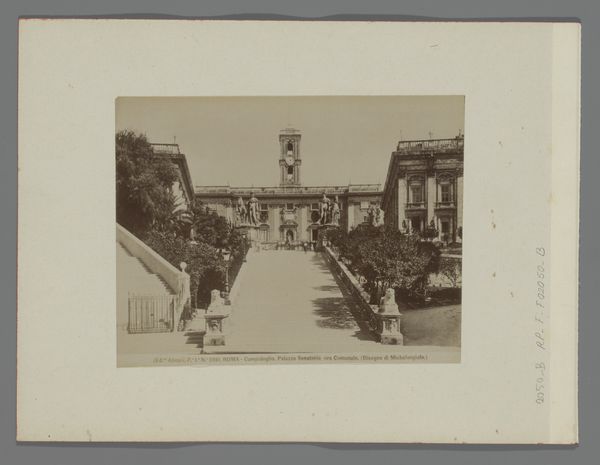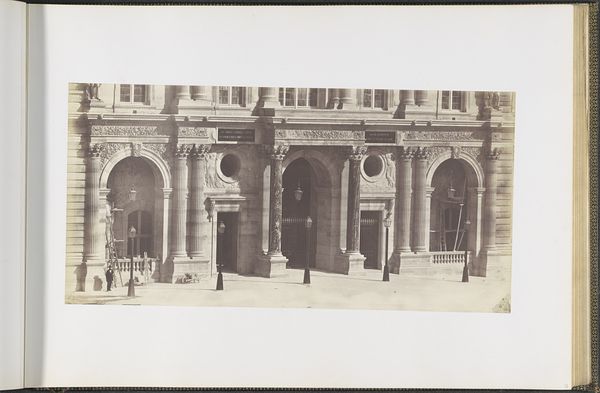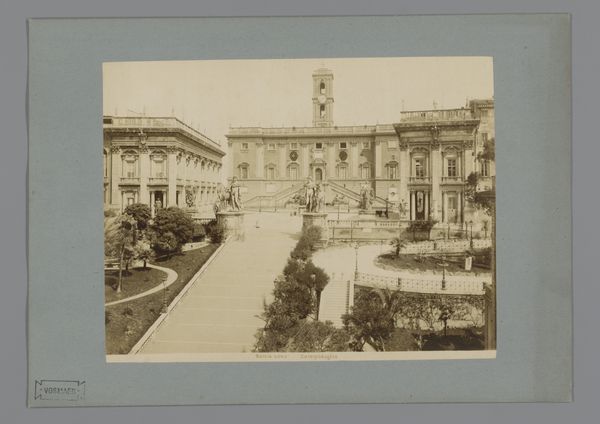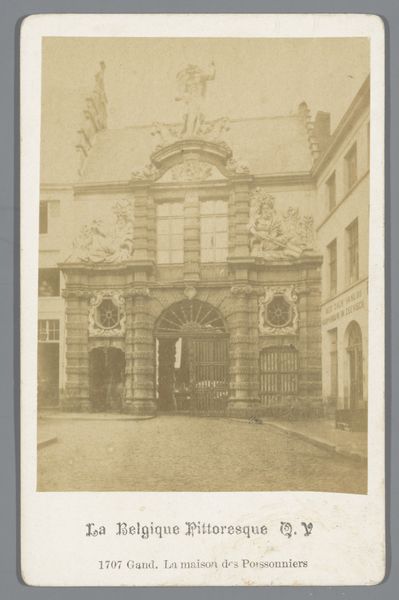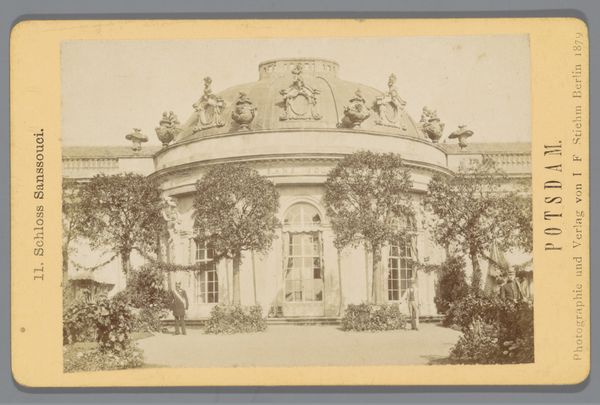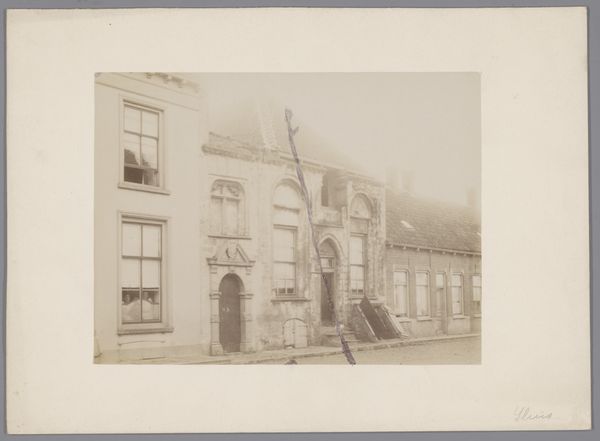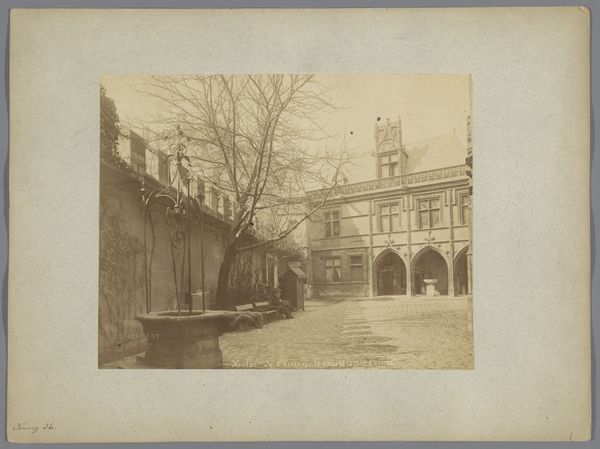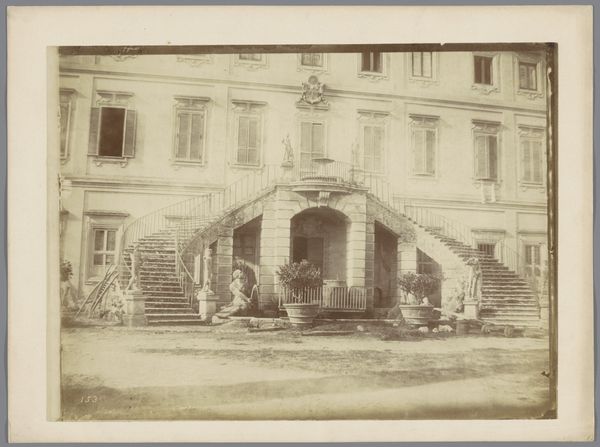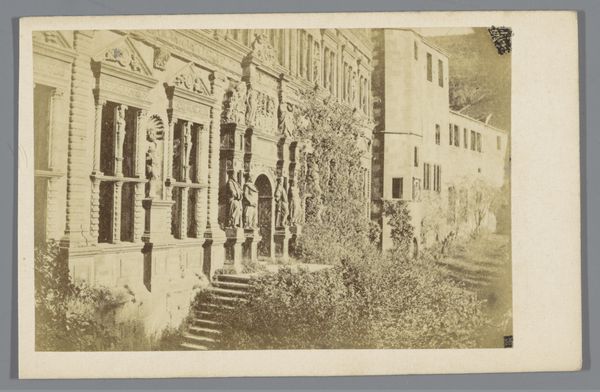
print, photography, architecture
# print
#
landscape
#
photography
#
architecture
#
realism
#
statue
Dimensions: height 201 mm, width 248 mm
Copyright: Rijks Museum: Open Domain
Curator: My first impression is one of stillness. The image has a timeless quality; the monochrome hues further enhance this sense of serene preservation. Editor: Indeed. What we're viewing is a photograph titled "Binnenplaats van het kasteel van Pierrefonds", dating back to somewhere between 1880 and 1900. It's credited to C. Angerer & Göschl, and captures the inner courtyard of Pierrefonds Castle. The photographic print is an interesting artifact blending realism and architectural photography. Curator: There is an undeniable beauty in the way light filters across the courtyard, highlighting the delicate details of the sculptures and relief work. This image feels as if time has stopped flowing. Do you notice the symmetrical distribution of the arches and statues, and the careful arrangement of foliage framing them? It all lends to a pervasive formal balance. Editor: Absolutely, the architectural detail is compelling! However, there's a romantic stillness too, isn't there? A hush seems to linger. Imagine the echoes, the secrets those walls could tell. The statue stands tall at the fountain, surrounded by an ornate display. One gets the feeling they are caught within a long dream. Curator: Dreams aside, the medium, a photographic print, itself influences the composition. Consider how photography, emerging then as a developing technology, rendered its subjects with objectivity but still allowed interpretation. Editor: Quite right. It's interesting how photography—what some deemed a mere mechanical reproduction—could capture so much more than just a visual record, it presents a place teeming with memories. This quiet scene also makes me curious about its audience: why would someone collect or display this photographic print? Curator: Perhaps for its evocation of French cultural heritage? Or the emerging photographic technology? It embodies how historical imagery could convey aesthetic values but could also reflect socioeconomic themes. The photographic art captures something more profound—the quiet echo of history, perhaps. Editor: An echo that we’ve both now amplified in our conversation. Thank you.
Comments
No comments
Be the first to comment and join the conversation on the ultimate creative platform.
